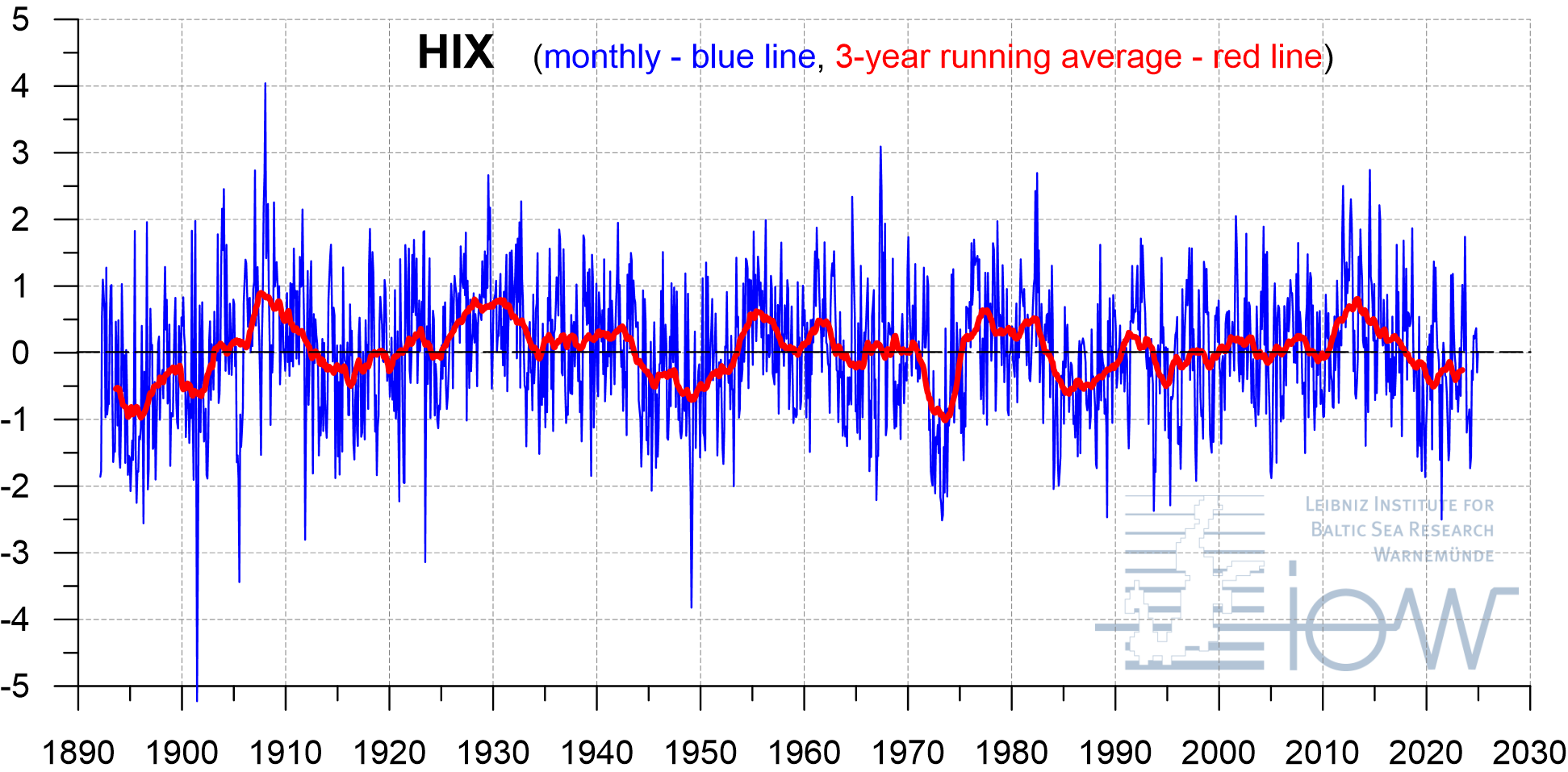
HIX - St. Helena Island Climate Index 1892-2024

The Benguela upwelling system in the subtropical southeast Atlantic is subject to dramatic interannual fluctuations sometimes termed ‘Benguela Niño’ events. The South Atlantic Anticyclone (SAA) is assumed to be the responsible climatic ‘activity centre’ for the south-east trade winds driving the upwelling processes along the Namibian and South-west African coasts.
Air temperature and humidity signals of this region, modulated by upwelling-controlled sea surface temperature (SST), are carried by the trades towards St. Helena Island. The island’s 1893-1999 century-long monthly weather records of temperature, pressure and rainfall have been assembled and homogenized. They exhibit trends for decreasing precipitation (10mm/100yr), increasing air temperature (0.9°C/100yr), and decreasing air pressure (0.6hPa/100yr).
Their first empirical orthogonal eigenfunction (EOF) covers 46% of the total variance; its associated temporal coefficient is proposed as a ‘St. Helena Island Climate Index (HIX)’. Austral winter HIX has a 42% correlation with a remotely sensed SST-derived Benguela upwelling index, called IBU, for the time period 1982 – 1999.
Not yet identified Benguela Niños (1895, 1905, 1912, 1916, 1946) and years of strong Benguela upwelling (1911, 1922, 1967, 1976) are newly suggested by the HIX.
Climatology of the St. Helena Island Climate Index from 1892 to 2024. The monthly values of the HIX are shown in blue. The red curve shows the moving average of the HIX over 3 years.
References
Feistel, R. Hagen, E. Grant, K., 2003. Climatic changes in the subtropical Southeast Atlantic: the St. Helena Island Climate Index (1893-1999). Progress in Oceanography 59 (2003) 321-337, https://doi.org/10.1016/j.pocean.2003.07.002
Progress in Oceanography 59 (2003) 321-337 (www.elsevier.com/locate/pocean)
Climatic changes in the subtropical Southeast Atlantic: the St. Helena Island Climate Index (1893-1999) https://doi.org/10.1016/j.pocean.2003.07.002
Dr. Rainer Feistel, Dr. Eberhard Hagen: Baltic Sea Research Institute, Seestraße 15, D-18119 Warnemünde, Germany
Keith Grant: Meteorological Office, London Road, Bracknell, Berkshire RG12 2SZ, UK
Our thanks go to Marcos Henry, Met Office St Helena Island South Atlantic for providing us with the photos .




